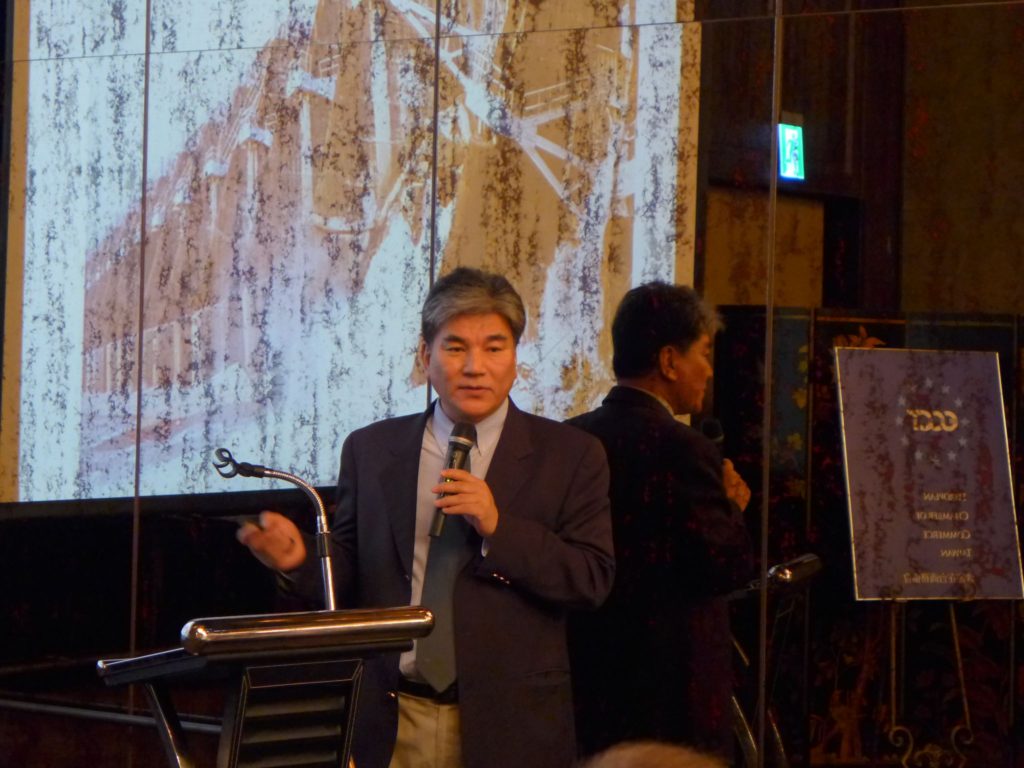MoI Minister Lee talks about development challenges

On 22 November Dr Lee Hong-Yuan, Minister of the Ministry of Interior was the guest speaker at an ECCT Premium Event lunch. Lee spoke about Taiwan's experience in planning for a coping with climate change.
In less than 20 years from now, the human population is expected to rise by two billion. This will result in numerous challenges including food production (which will need to be increased by 40%), a shortage of water, water pollution, higher energy needs, over-fishing, deforestation, reduction of biodiversity, global epidemics, climate change, poverty and risks of financial crises and international conflicts.
Taiwan is just one of many countries already experiencing the impact of climate change as evidenced by the increase in the number and severity of typhoons, floods and droughts. According to Lee, Taiwan now experiences severe floods every two years and droughts every nine years and, as the problems associated with the rising population increase, so will the severity of these phenomena.
Taiwan gets enormous amounts of rain, especially during typhoons. Damage from typhoons has been exacerbated by improper land use and development. For example, landslides have become frequent in mountainous areas that have been over-developed, land is subsiding in several areas of the island due to excessive extraction of water from underground aquifers and many of Taiwan's reservoirs have lost much of their capacity from siltation, the consequence of excessive soil erosion.
On top of the risk of climate-related disasters, Taiwan is a seismically active island with severe earthquake risks. Following the most severe earthquake in recent history (on 21 September 1999), Taiwan's building codes were revised and structures built since then have been generally sound. However, there are numerous old buildings all across Taiwan, including 4,000 in Taipei city that would not withstand a moderate earthquake, according to Lee.
Taiwan has wasted enormous resources in rebuilding roads, reconstructing buildings damaged by typhoons and earthquakes. Lee cited several examples including a road and a school that have been repaired or rebuilt following a natural disaster, only to have to be repaired and rebuilt a few years later. To meet Taiwan's multiple geological and climate-related challenges requires a much smarter approach to development, which takes into account all scientific data, sets regulations and designs development projects according to the best use of land.
Preparing for just Taiwan's climate and earthquake challenges are daunting but Lee is using his hydraulic engineering background to develop solutions. For example, under Lee's leadership, the MoI solved the problem of land subsidence next to the high speed rail in just four meetings with stakeholders by proposing the drilling of deep water wells to replace the ones then in use.
Under Lee's leadership, the MoI has conducted extensive research and built up a large and comprehensive database, including maps of Taiwan's earthquake zones, flood-prone areas and landscape to determine the most suitable locations for various types of development and the most dangerous locations. For example, the MoI has a hazard map for areas with high risks of floods and landslides. All the information is freely available.
As with all development, urban renewal projects should be planned and implemented based on scientific evidence. For example, old and unsafe buildings should be either renovated or torn down. Buildings in high risk areas should be replaced with public parks and residents relocated to new buildings in safer areas.
Lee is all too aware of the sensitivities and difficulties involved in suchlike undertakings. He admitted that technical solutions are just 10% of solving problems. Getting all stakeholders to work together and putting in place the right development model is critical. Dialogue and public participation is crucial as is coordination among government departments and agencies.
But Lee said that he believes he has found a way to satisfy all stakeholders while even generating revenue for the government for urban renewal projects. He did not go into details but said that he hoped to implement examples of workable urban renewal housing projects within the next year that would provide better housing (at a reasonable cost) to existing residents while generating revenue for developers and the government.
In terms of ensuring that development is done correctly and will not adversely affect the environment, the MoI is working on a "bible" for consultants, architects and contractors. The idea is to combine the knowledge and experience of all relevant disciplines. For example, urban planning and drainage should be combined. All water, including rain water and waste water should be treated and dealt with on site and slowly released into rivers rather than channeled to one location which could become overwhelmed in the event of flooding.
Lee's presentation showed some examples of engineering sewage interceptor projects completed while he was Deputy Mayor of Taipei County (now Xinbei), that both resolved flooding problems and beautified the riverside, which in turn led to rising land and property values in the area, completing a virtuous cycle.
Lee's speech also addressed the need for more disaster insurance coverage in Taiwan. In addition, he talked about the comprehensive disaster relief system now in place covering the whole of Taiwan. Disaster mitigation maps drawn up by the MoI have already helped to save lives in remote villages struck by typhoons recently, according to Lee.
